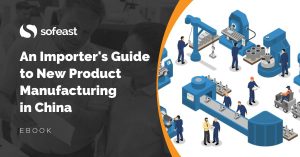Many people have an idea for a new hardware product and call us, and in many cases, it is too early, and going to a design house now may also be too early! They need to work with an industrial designer. (I am thinking of electro-mechanical products here.)
The logical steps are in this sequence:
a. Concept > b. Aesthetic Design > c. CAD Design > d. Proof-of-concept Prototype > e. Work-alike & Look-alike Prototype
So, getting the concept right is important. Here are 6 ways to do that.
1. Describe the problem you are trying to solve
(You might want to call it “the improvement you are trying to bring to your users’ lives”, or the “value proposition”: that’s what I mean.)
What will push people to buy your product? Convenience, savings, lower risk, the need to be fashionable… Try to pick just 1 or 2 “big ideas”. It will be at the core of the product’s design intent.
For a B2B product (sold to businesses), the idea is the same. Someone (one or several people) will make the decision. It is always about people and their problems, challenges, or needs.
2. Clarify your target market
What types of people or businesses will buy the product? How to classify them, and how to find them?
It’s all about customers. Don’t be overly focused on competition (but make sure you can justify why your product is different and, for a subset of people, better than what is already on the market).
Once a design is on paper or in the form of 3D rendering (or, better, a working prototype), you will be able to get better feedback from that market. But any feedback is better than no feedback. Don’t ignore it if 10 people who you thought would be very excited are less than enthusiastic. Tweaking the concept might be needed.
3. Start an outline of the specifications
Start to translate “what customers will like” into “what the product needs to achieve”. It is the first deployment stage in the QFD approach.
For example, “The battery will need to last for 4 hours in use” is good. “One 10,000 mAh battery” is even better because its size and weight can be estimated easily.
If you don’t do this, the designer will have to make guesses, and a lot of work might have to be scrapped later on when the specifications are clarified (in case they can’t be achieved).
4. Start thinking of the constraints and objectives
This is closely linked to my previous point. Plan for this as early as possible, to make sure you work in the right direction. Here are two examples:
- If a product is to be exposed to a lot of dust, the product has to be rugged
- If life or death outcomes are at stake, the design will need to be as robust as possible, and manufacturing execution has to be flawless
Basically, you need to start documenting (in a ‘rough draft’ approach) what you envision as the selling price, what is most important when it comes to usability, what touch & feel should be like, the safety and compliance considerations, what the packaging needs to achieve, and so forth.
An experienced designer will do some research and will ask some of the right questions, but you will save yourself some billable time if you put it all on paper first!
5. In your selection process, go beyond portfolios
You can easily find several options with a quick Google search. But don’t get impressed with what a senior principal of the firm has done for a famous brand. (It is nearly a red flag, actually, as they might be more focused on established companies with large budgets, while you may be a fledgling startup.)
Here are a few tips:
- Have a talk with a designer and see if he ‘gets’ the product. (Of course, have them sign NDAs and be wise in whom you share your concept to.)
- If you have spent some time thinking about the concept (as I advised above), you have an idea of the product universe, the materials, and the technologies involved. It is always better to work with people who are familiar with those.
- If your product development will need multidisciplinary work (e.g. industrial & mechanical, electronic, firmware, mobile app), do you want it all to be done in the same agency? Ideally, all the hardware-related work would be managed in the same team, in order to avoid conflicts (e.g. “your board is too large” vs. “your casing is too small”). Otherwise, someone has to step up and manage the entire project from a technical perspective — we have often taken that ‘technical project management’ role, so it is doable.
- You might even want to have 2 separate designers work on the exploration work and produce initial sketches. Then, you are better able to pick one of them for the rest of the journey. The book Decisive, which breaks down the elements of the process leading to good decisions, makes such a recommendation, and it struck me as a great idea. The early exploration work is so important!
6. Don’t expect an immediate flash of insight
The creative process does not work as “I hear a situation and a challenge, and the idea comes to me right away”. You need to allow some time for the concept to mature (including in your own brain, at the start).
Discuss it with friends and with members of the target market (see tip 2 above). Maybe you will realize it is not that good. Maybe it needs some further thinking, maybe it needs to be dropped.
UPDATE: 7. Get a technical advisor, and keep your 1.0 concept simple
I listened to episode 19 of the Predictable Designs Podcast, and John Teel gave 2 very good tips that I am adding to the list 1 week after initial publishing:
- Get a technical advisor who has been involved in some relatively similar projects in the past, if you yourself haven’t got all the experience needed;
- Keep the first version of your product as simple as possible, as long as it meets the market needs, since it will cut your develop time & investment (and your risks).
*****
What do you think? Any other tips to share for people that are still at the early concept phase and want to develop and manufacture a new product?
Helpful resources
If you’re developing a new hardware product, you may find these posts useful, too:
- 18 Electronic Product Design Firms For ‘Made-in-China’ Products
- List of Contract Manufacturers in China – Top 13 Factories
Are you designing, or developing a new product that will be manufactured in China?
Sofeast has created An Importer’s Guide to New Product Manufacturing in China for entrepreneurs, hardware startups, and SMEs which gives you advance warning about the 3 most common pitfalls that can catch you out, and the best practices that the ‘large companies’ follow that YOU can adopt for a successful project.
It includes:
- The 3 deadly mistakes that will hurt your ability to manufacture a new product in China effectively
- Assessing if you’re China-ready
- How to define an informed strategy and a realistic plan
- How to structure your supply chain on a solid foundation
- How to set the right expectations from the start
- How to get the design and engineering right
Just hit the button below to get your copy (please note, this will direct you to my company Sofeast.com):


